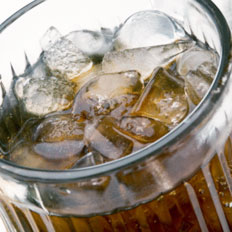Have it your way,” the old jingle promised us. “Special orders don’t upset us.”
At the time it was hatched a few decades ago—when heat lamps were king and identically built burgers could easily sit under them for several minutes at lunchtime—this simple creed was how Burger King chose to distinguish itself from a formidable competitor.
Nowadays, telling people they can have their burger, pizza, sandwich, salad, or side dish the way they want it is a little like offering them napkins, forks, or free parking. Made-to-order is the order of the day. And taking liberties with chains’ standard offerings is routine.
But one facet of the quick-serve experience remains largely unchanged from the way it was in 1975, and that’s the soda fountain. Sure, there are more varieties of carbonated and noncarbonated beverages to offer than there used to be. You wouldn’t have found bottled water, flavored iced teas, or high-quality ice cream milkshakes on the menu during the Ford administration. But given what’s now possible, most chains simply haven’t gone as far as they can in allowing customers to customize their beverages, which is why this area is so wonderfully ripe for exploration.
From the extensive research we’ve done at the Center for Culinary Development on Generation Y—that worldly, eclectic, and experienced demographic born between 1980 and 1992 or so—there’s no question that the vehicles this group chooses to wet its whistles are no mere afterthought. This is a generation raised on a dizzying array of beverage choices, one for which “one size fits all” is a total nonstarter.
In our recent Beverage Trends Culinary Trendmapping Report, published in conjunction with Packaged Facts/marketresearch.com, we found that the beverage market is in general splintered into niches and that two dominant subcategories have emerged: drinks that are, or are perceived to be, healthful; and drinks that are, or are perceived to be, of superior quality.
The healthful heading includes functional, nutritional, and wellness beverages. On this list are teas, juices, sodas, and waters (or combinations of these) containing exotic fruits and herbs. It includes anything from soursop, cloudberry, lychee, and yumberry to ginseng, turmeric, and other Eastern infusions. So-called “elixirs” that are intended to promote good health and relaxation are also emerging as Gen-Y favorites: botanical waters, vegetable juice blends, kombucha, and sodas sweetened with honey, agave syrup, and evaporated cane juice.
On the quality side, there are artisanal carbonated juices, natural sodas sweetened with sugar rather than corn syrup, flavored or enhanced waters, and all-natural bottled smoothies.
Given the incredible assemblage of flavors, formulations, tastes, and textures on the market today, how can quick serves capitalize on these trends and make a bid for Gen-Y loyalty?
Here’s one idea. In our San Francisco offices, one of the coffeemakers we have on hand uses dozens of flavored coffee pods—all sized for individual servings—to brew the morning cup, and all of us have our own favorites. Exotic Italian and African roasts, vanilla-hazelnut, mint, mocha, and cinnamon concoctions, all available on demand, and both the quality and variety of choices are outstanding.
This is the sort of versatile concept that more chains might employ to offer consumers a wider variety of choices with their meals. Imagine if chains began with a series of simple bases—water, carbonated water, unsweetened iced tea, cola, and the like. Then, using dozens or even hundreds of preportioned flavor pods, mixers, juice blends, sweeteners, or functional additives, consumers could choose to create a carbonated ginger-honey spice tea, a mango-pomegranate water or aqua fresca, black-cherry/vanilla cola, or an orange-pineapple-ginseng energy drink. Sonic has taken this idea further than just about any chain I can think of, but even they could incorporate several of these elements into its soda-Chiller-shake concept to arrive at a host of intriguing mix-and-match options.
in general splintered into two niches: superior health and superior quality.
The mechanics of all this customization would be somewhat complex. Coffee’s one thing—the basic formula is more or less nonnegotiable. On the other hand, offering the ability to customize one’s tea, soda, juice, or water could be tricky from an operations perspective. But if done well, I maintain that the potential appeal to those young, increasingly affluent, increasingly demanding Gen-Y consumers—as well as their parents and grandparents—could be substantial.
One other thought on the subject of variety and novelty: As sales of traditional carbonated sodas continue to decline, it’s worth asking whether beverages with flavor profiles that are considerably less sweet—or even savory—might appeal to an increasingly multicultural, multiethnic, multidimensional customer base.
Bionade, for instance, is an organic, fermented German beverage that comes in flavors such as orange-ginger, lychee, and herbs. Positioned as an alcohol alternative, it represents a decidedly different approach to the business of refreshment—a category unto itself. The Honest Tea brand, which features several barely sweet varieties, has found a niche large enough to attract the Coca Cola Company as a major stakeholder. Plus, a line of sodas simply called “Dry” have lavender, kumquat, and rhubarb offerings, and is being touted as the ideal nonalcoholic accompaniment to different foods.
Whether such lightly sweetened or “nonsweet” alternatives will gain traction among mainstream consumers is anyone’s guess. What we do know is that a nation with a hearty appetite for choice is eager to explore alternatives to the beverage status quo. And that opens up a world of opportunities for quick serves willing to drink deep from the well of innovation.








